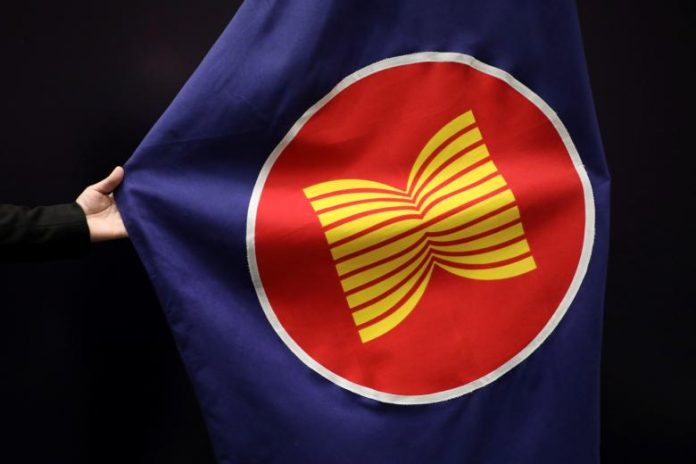The most disturbing aspect of the growing militarisation of the South China Sea these past few years is that the pace is picking up so rapidly that, unless someone puts a stop to it now, we could soon come to a frightening situation of who is going to blink first.
The emerging cold war between China and the United States is being fought in part, if not primarily, in these strategic international waters. The past year saw reported standoffs between the naval forces of the two powers and skirmishes pitting China against the Philippines, Vietnam or Indonesia. Each time this has happened, the sides involved have shown the restraint to prevent an escalation. But who can guarantee this will be the case the next time around?
The rhetorical statements from both Beijing and Washington, as well as from some of their allies, have escalated rather than defused the tensions.
Other distant and nearby powers with an interest in protecting in the South China Sea are also building up a military presence and conducting exercises, including Russia and the European Union, as well as Japan, India and Australia. In September, the US announced the formation of a security pact with the United Kingdom and Australia, which includes allowing Australia to acquire nuclear-powered submarines, to patrol the Indo-Pacific region.
It’s time for Indonesia to act, through Asean, lest we allow big powers to use the South China Sea, which is right in our backyard, as a theatre for their proxy wars.
The Asean Outlook on the Indo-Pacific (AOIP), which its leaders signed in 2019, has gained widespread acceptance from the big powers, including China and the US, that the time is ripe for the regional grouping to raise the ante and initiate a security dialogue.
None exists for the Indo-Pacific region, understandably, because it is a geopolitical concept that has evolved only in the last decade to reflect today’s geopolitical reality. Beijing is still reluctant to use the term, preferring the old Asia-Pacific concept, but it is slowly coming around.
President Xi Jinping in his speech during a virtual summit with Asean leaders in November said he saw a potential link between the Asean Outlook on the Indo-Pacific and China’s Belt and Road initiative to build large infrastructure projects that connect China with many countries all the way to Europe. At least, this overlaps in part with the Indo-Pacific region.
US President Joe Biden in his summit with Asean leaders in October picked up on the Asean Outlook as consistent with the US’ interests in maintaining a free and open Indo-Pacific. Where the two parted ways was in the way to go about it. While the Quadrilateral Security Dialogue (involving the US, Australia, India and Japan) seeks to contain China’s military and influence, the Asean concept has no such agenda and is inclusive of China.
Biden in his speech recognised the essential role of Asean in the evolving Indo-Pacific regional architecture. The US joins countries like Japan, India and Australia in accepting Asean’s centrality in maintaining the resilience, prosperity and security of the region.
This should be cue from all these countries for Asean to act as a mediating force amid the growing tension. No other country or force is in a better position to do so. And Asean already has the AOIP in place.
Asean centrality in the Indo-Pacific is not only in concept, but it is also defined by its geographic location, being the only region apart from Australia that straddles both the Indian and Pacific oceans (and Australia sits on the southern fringe). And when it comes to the South China Sea tension, Asean is in the thick of it, with some of its members having maritime territorial disputes with China.
Since the Asean Outlook was an Indonesian initiative, it is really up to Jakarta to take it up to the next level and turn it into a security dialogue, perhaps modelled on the Conference on Security and Cooperation in Europe (CSCE), founded in 1973, which became instrumental in the détente process during the Cold War.
For Indonesia, which has stubbornly remained nonaligned, this is a call to reactivate the old mantra of independent and active foreign policy. We should not sit on our laurels.
The Asean Outlook contains principles such as openness, transparency, inclusivity, a rules-based framework, good governance, respect for sovereignty and nonintervention. The outlook emphasises dialogue and cooperation in place of rivalry in the Indo-Pacific region. Who could say no to these principles?
When it was launched, many foreign policy observers dismissed it for its lack of substance, but that turns out to be its strength, as it has gained widespread acceptance, including most importantly from China and the US. It should be easy now to bring everyone together based on their acceptance of these principles. The negotiations will be the hardest part, if Asean can pull them off, but at the very least, they will bring everyone to the table.
It took the European security dialogue 16 years before the Cold War between the US and the Soviet Union ended. Experts can argue all they want about if and when we are in a new cold war situation, but this should not stop Asean, or Indonesia, from taking the initiative to defuse the tension.
If not Asean, who else is there?
By Endy Bayuni / straitstimes
The views and opinions expressed in this article are solely those of the author and do not necessarily reflect the position of AsiaWE Review.




